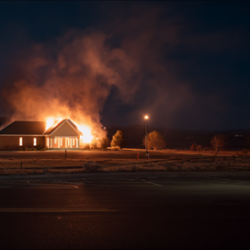[BOISE] – Attorney General Raúl Labrador announced an administrative appeal yesterday with the Federal Aviation Administration (FAA). The appeal asks the agency to reconsider its determinations that the Lava Ridge project, a proposed wind turbine development on Bureau of Land Management property in Idaho’s Magic Valley, poses “no hazard” to aviation in the area. The vast majority of any power generated at Lava Ridge would be sent to California, and the project would place hundreds of wind turbines on federal lands adjacent to irrigated farms and local airports. The wind turbines would be among the tallest, if not the tallest, in the United States, and pose an obvious hazard to local aircraft and airports, and especially to agricultural aviation operations (commonly called “crop dusting”).
In evaluating the wind turbines, the FAA expressly declined to consider low-level flights, including the more than 13,000 agricultural aviation flights that occur in the area yearly. These operations are critical to the area’s economy, constitute a large segment of the total aviation operations at local airports, and would clearly be impeded if not endangered by the proposed turbines, and yet the FAA inexplicably declined to consider them in evaluating whether the wind turbines would be a “hazard” to aviation.
“Strong words are just not enough,” said Attorney General Labrador. “The people of Idaho have overwhelmingly demanded action and deserve better than to be ignored by federal bureaucracies. Yesterday’s appeal is my office’s first of many steps in fighting this ill-conceived project that threatens Idaho’s agriculture, wildlife, and waterways.”
Prior to the start of any major project on federal lands, an Environment Impact Statement (EIS) must be included. The EIS analysis must consider the impacts of the Lava Ridge project, including impacts on aviation. The BLM released the Final EIS for the Lava Ridge project today and the BLM will likely release a final decision on the project—the “Record of Decision,” in a few weeks.
“If built, the wind turbines would increase the difficulty and safety risks of performing aerial applications that are already quite difficult and risky. In some locations, or under certain conditions, the increased difficulty and risk may effectively preclude aerial applications to the crops or fields,” the filing stated.
Other nearby wind development projects on federal land are also in stages of permitting, waiting to see if and how the Lava Ridge project comes to fruition.
About Staff Writer
The Gem State Chronicle brings you news and analysis that empowers you to make positive change in Idaho. Established 2022.













